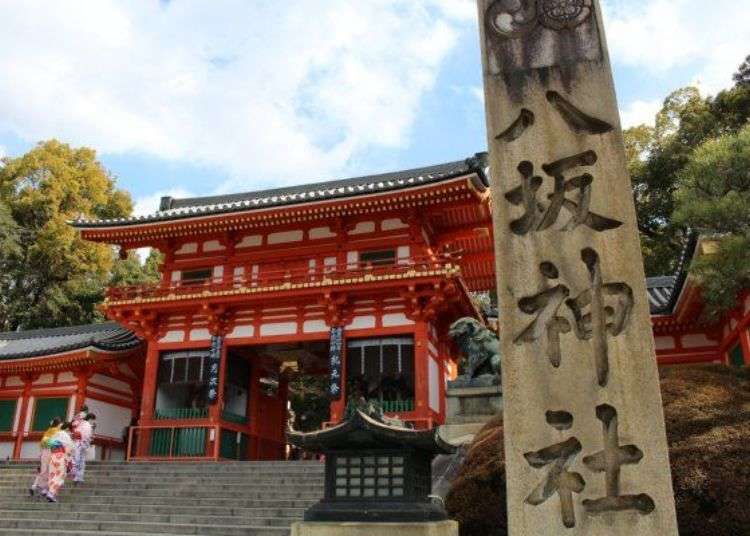
Yasaka Shrine, lovingly nicknamed "Gion-san," is a famous shrine in Kyoto's Gion district. Visited by many people from all over the world, it is also Higashiyama's biggest tourist destination.
But are you familiar with the intriguing power spots in the area related to beauty and marriage? Join along as we walk around the shrines lining the foot of the mountain, and come to a relaxing garden, Maruyama Park.
Yasaka Shrine: Headquarters for 2,300 Shrines Nationwide
Shijo-Dori is one of the main streets that connect the east and west, cutting through the urban area of Kyoto.
The Yasaka Shrine located at this eastern point is the National Headquarters of the approximately 2,300 Yasaka and Susanoo-no-mikoto Shrines.
In the old days, it was known as Gion Kanjin'in or Gionsha, and also given the name of one of the 'hanamachi' or 'flower towns,' originating from when it prospered as a front gate town.
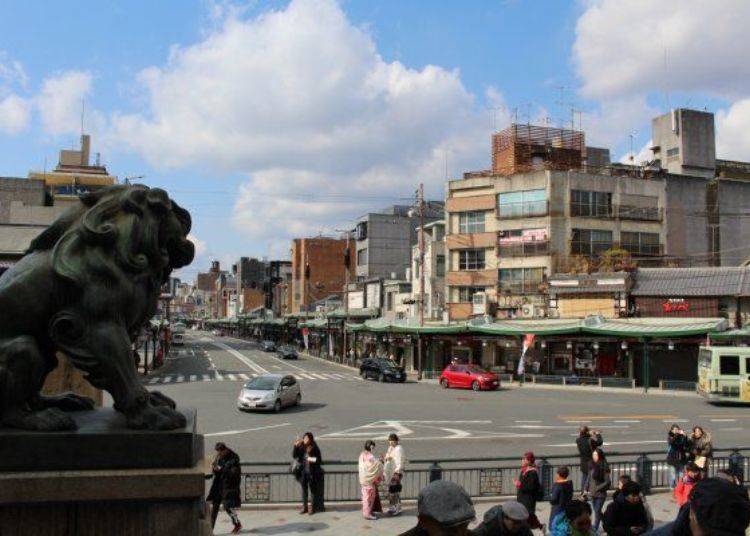
There are various theories about the creation of Yasaka Shrine. According to some reports, it is even older than Heian-kyo. It is said that worship began at this place in year 656 (Saimei 2) when an envoy from the Korean Peninsula enshrined the mountain god Gozu of Korean Mythology.
In another theory, in year 876 (Jogan 18), Ennyo, a monk of Nanto (Nara), began to enshrine statues of the Medicine Buddha around the temples.
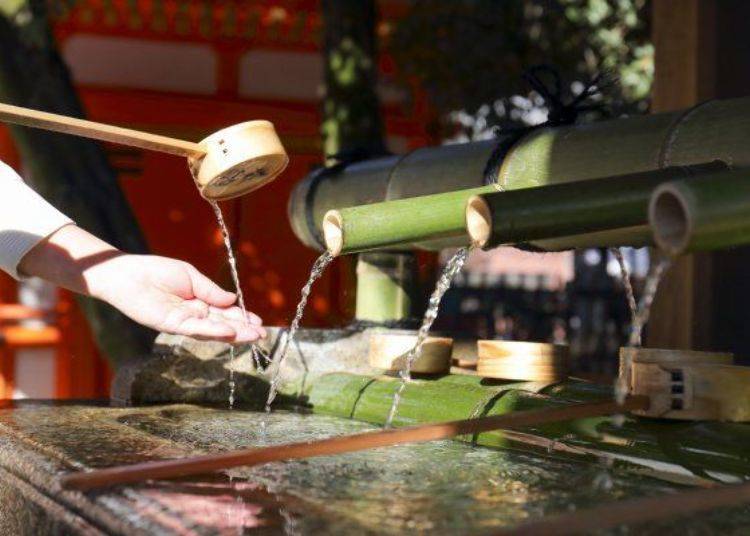
Once you climb the stone steps and go through the Nishi-Romon Gate, you will cleanse your hands and mouth at the 'temizuya,' to the left of the gate. Once you have purified your body, you can finally approach the shrine located straight ahead when you enter through Nishi-Romon.
It is called Eki-jinja, or "plague shrine," and as its name suggests, it is a shrine to help eliminate disease.
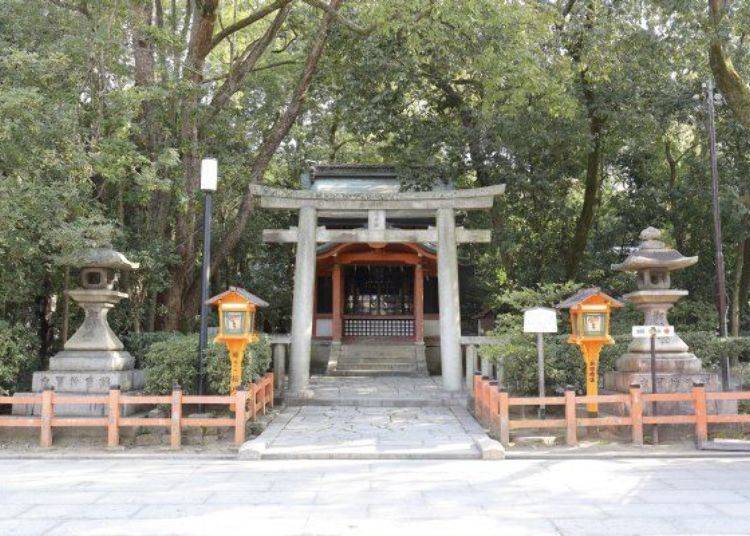
The tradition states that Somin Shorai, who is enshrined here, received a ring of reeds from Gozu-Tenno in order to prevent the plague. It is believed that Somin Shorai protects from disease.
At the famous Gion Festival, you can get amulets, such as chimaki, said to ward off illness, on which the phrase "Somin Shorai Shison Nari" is written. This phrase roughly translates to “I am of Somin Shorai (so protect me from disease).”
The Yasaka Shrine Legends of Water and Dragons
Head right from the Eki-jinja and go along the road, pass Ota-sha, Ebisu-sha, Ookuninushi-sha, and the shrine office, and exit the front of the honden, or main shrine.
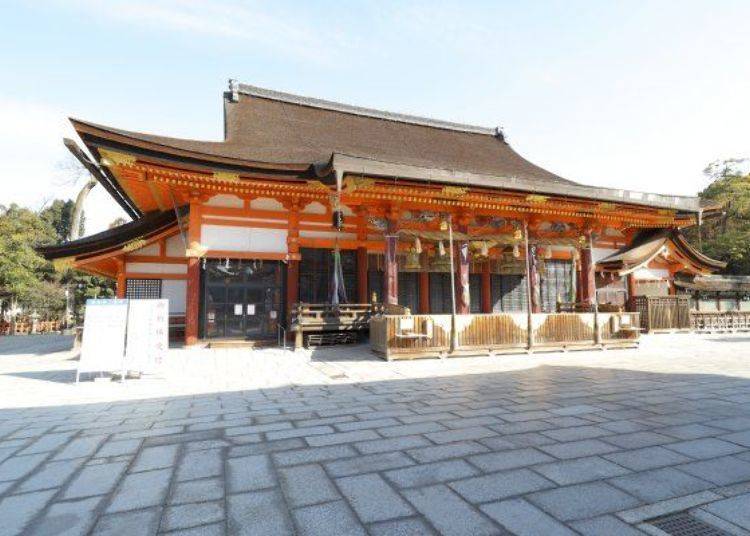
The main hall is designated as an Important Cultural Property of the country. Enshrined here are three deities, Susanoo, Kushiinada-hime-no-mikoto, and Yahashira-no-mikogami. The architectural style of the roof covering the main hall and worship hall is called Gion-zukuri. The current building was rebuilt in 1654 under the Tokugawa Shogunate.
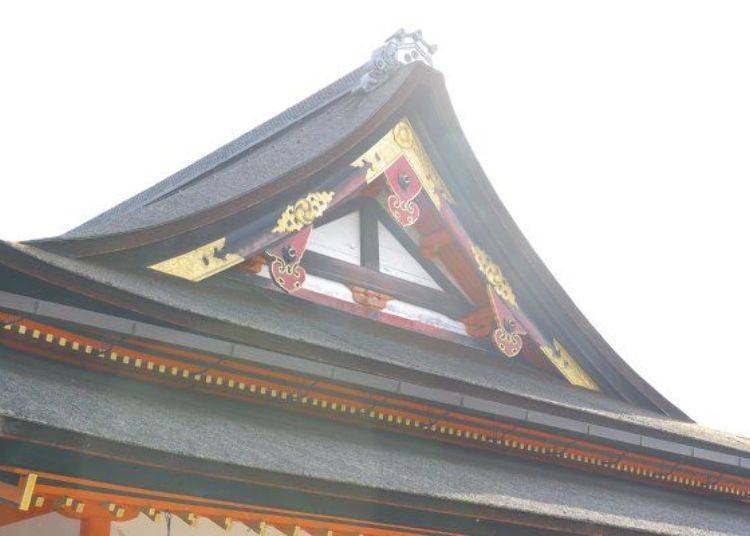
There are many mysterious legends surrounding the Yasaka Shrine, and the main shrine holds one of them. One of the stories told by the people of the city is that there is a pond underneath whose underground streams continue toward Shinsenen and Minami-no-Toji, located west of Heian-kyo.
This pond has become known as the "dragon hole" where the blue dragon lives, and a place where the energy of the earth gathers. It is said to have been protecting the capital since long, long ago.
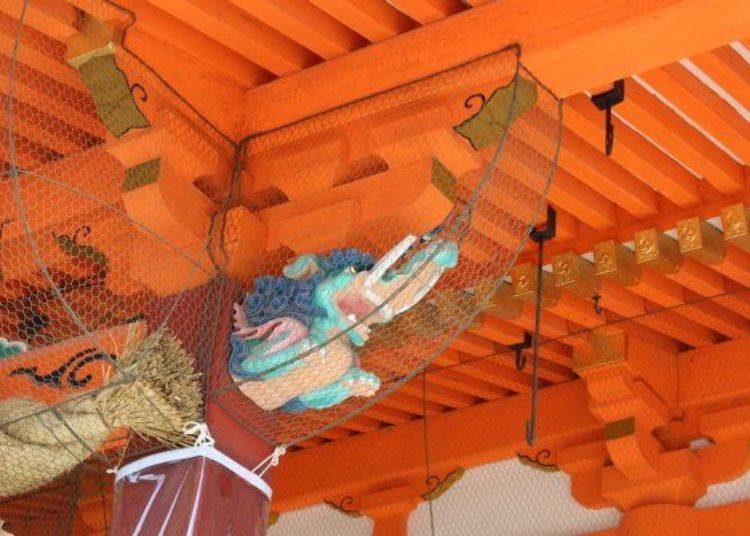
In private folklore, it is said that this is the only place where you can hear it loudly echo when you face west and strongly clap you hands in prayer under the east pillar of the main hall. This is because the wooden carving of the dragon "Ryuboe" on the pillar cries in response to your prayer.

After worshipping with two bows and two claps, I tried my best to listen for the dragon's cry of response, but with the sounds of all the other people's claps around me, it was difficult to hear...
The front of the main shrine is crowded with worshippers, so it is necessary to pay attention and not disturb those around you. It is important to remember good manners, especially in the presence of gods!
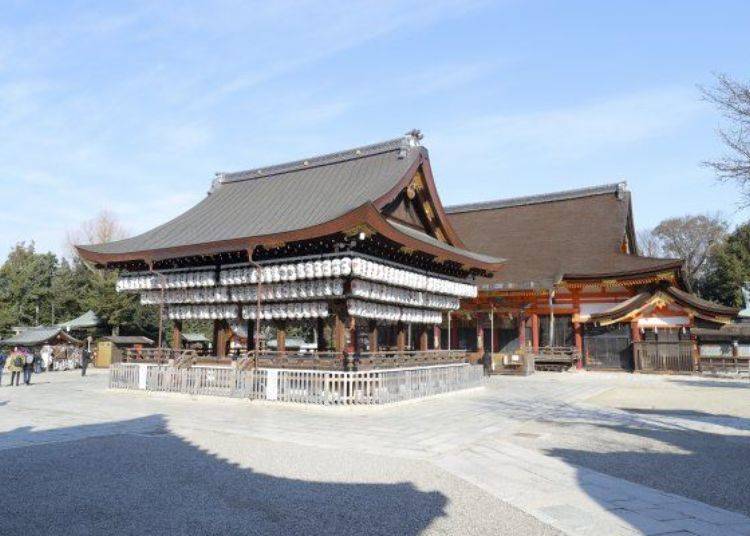
Various festivals are held throughout the year at the Kagura Hall in front of the Main Hall.
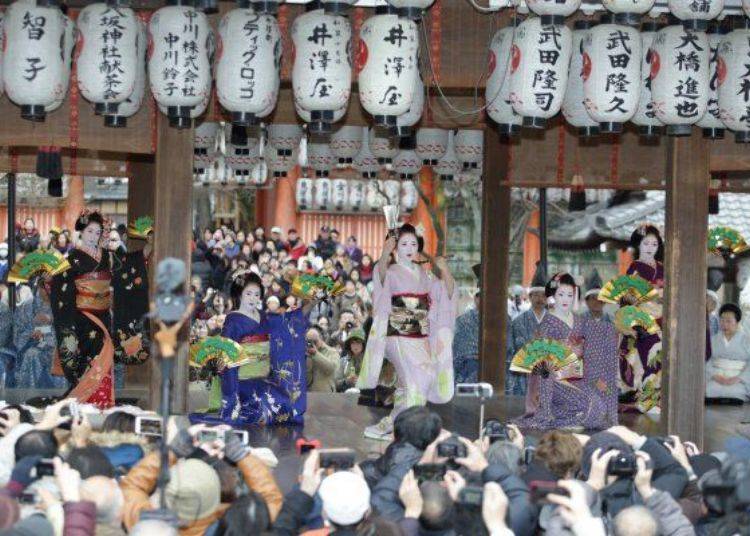
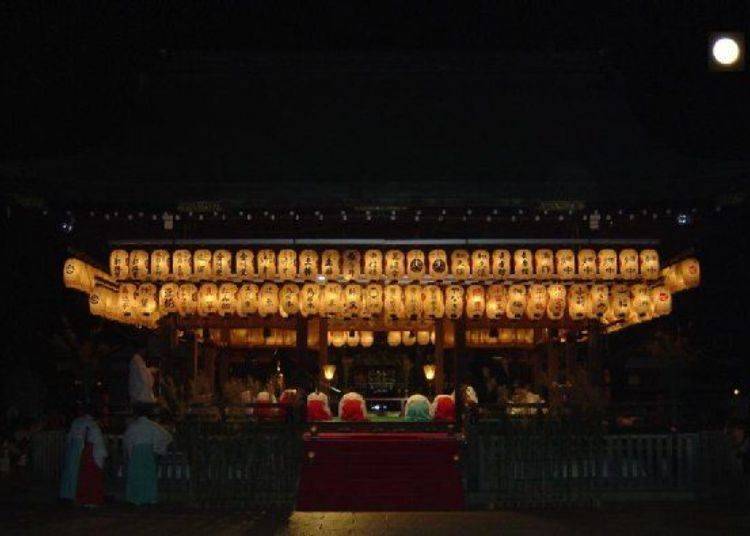
In front of the Main Shrine and Kagura Hall there is a south gate. Through the torii and heading south is the road that leads to Kodaiji and Kiyomizudera.
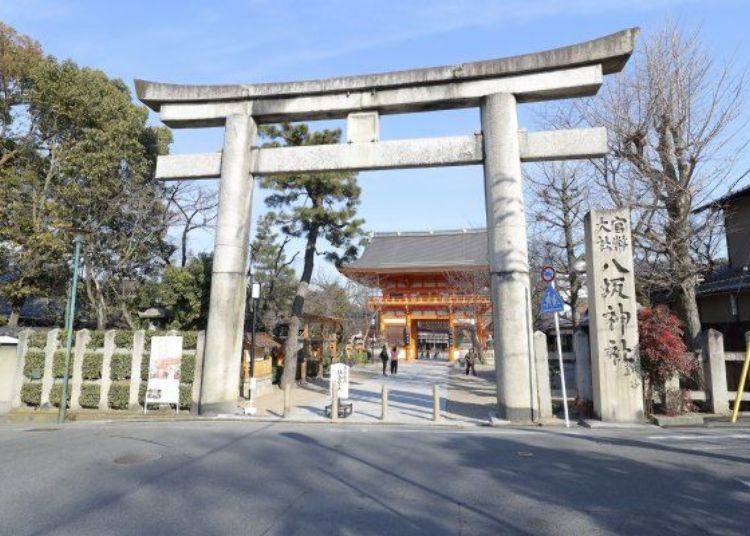
Goddess of Beauty, Bigozensha Shrine
In the grounds of Bigozensha Shrine, dedicated to the Goddess of Beauty, there are nearly 20 other shrines surrounding the Main Shrine, dedicated to various other gods.
In the southeast of the Main Shrine is the Daijingusha Shrine. It is dedicated to Amaterasu Omikami and Toyokeno Omikami, and at the side of the torii gate is a fountain of gojinzui, or holy water, also called "power water."
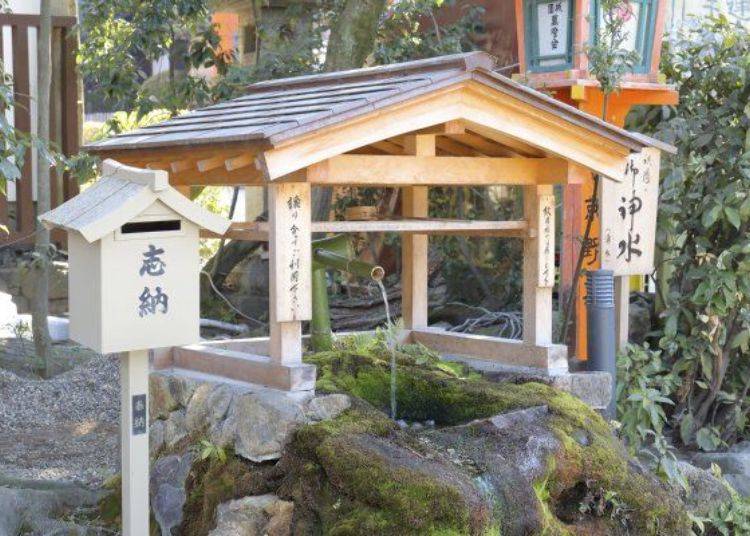
There is also a legend about the "Tadamori lantern" standing at the north side of Daijingusha.
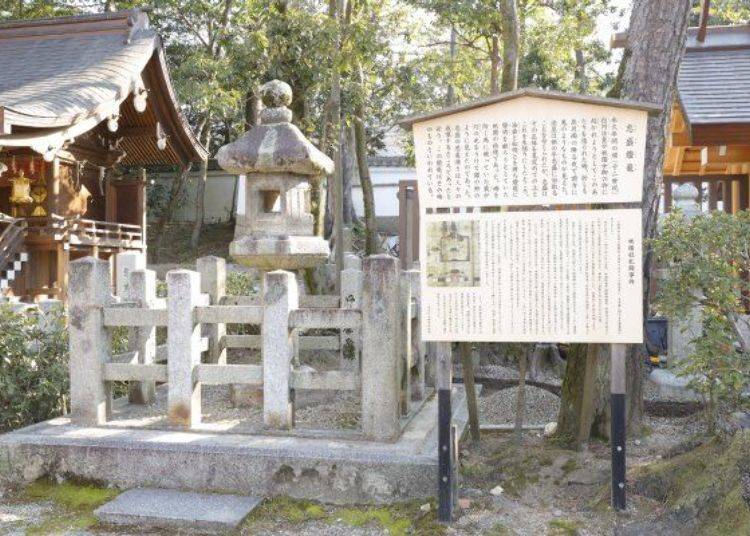
Tadamori is the father of Taira no Kiyomori from the Tale of the Heike. When the emperor passed through in the rain one day, a monster-like shadow crosses his path. He was ordered to kill the accompanying Tadamori, however, Tadamori was able to reveal the identity of the monster as that of an old monk.
As he was about to kill the monk, the emperor was able to calmly judge his loyalty and they escaped harm. It is said that this honor was what lead to the success and prosperity of the Heike.
On the north side of this lantern is Akuojisha Shrine.
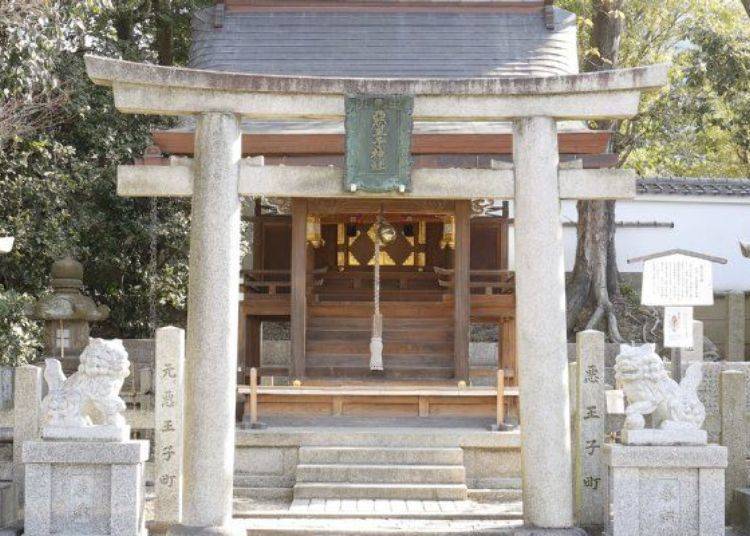
At first one might think of this to mean "evil spirit," but the meaning is quite different. Rather, it is closer to meaning "strong" or "courageous."
There are two aspects to the deities' souls: nigi-mitama, or the normal soul, and ara-tama, the wild soul. This shrine is dedicated to the wild soul, who can fulfill a variety of requests.
Next I saw the Utsukushi-gozensha Shrine. As its name suggests, it is dedicated to beauty, and many women from all over the country, including maiko and geisha, as well as people who work in the beauty and hairdressing industry, come to worship at this shrine.
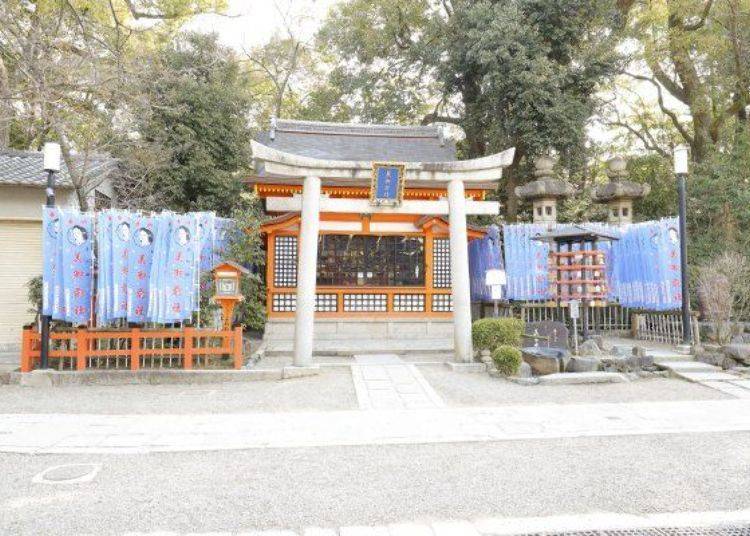
Worshipped at this shrine are three beautiful goddesses, who are honored for their beauty: Tagiribime-no-mikoto, Tagitsuhime-no-mikoto, and Ichikishimahime-no-mikoto.
Ichikishimahime-no-mikoto, in particular, said to be a prominent beauty, who was worshipped as Benzaiten, one of the Seven Lucky Gods. Moreover, overlapping with another goddess of beauty, Kisshoten, she has also been believed to be a goddess of fortune and performance as well.
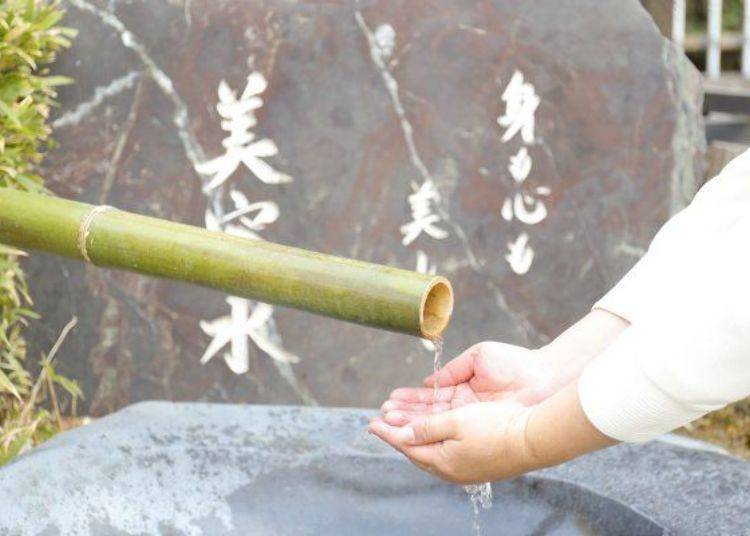
The reason so many people come to this shrine is because the water that flows from the side of the torii gate is known as the miraculous and magical "beauty water."
When applied to the skin, this water is said to not just cleanse your physical body but your mind. You can pray for purity of body and mind, the fulfillment of virtues, and good luck at this shrine.
It is located towards the back of the shrine area, but on the day I visited, there was a line already forming to get some of this water. Though you may want to use as much as you can to clean your skin, remember this is a place to purify the mind.
Not to be greedy, I only took a few drops, and said a prayer for "spot-and-wrinkle free skin!"

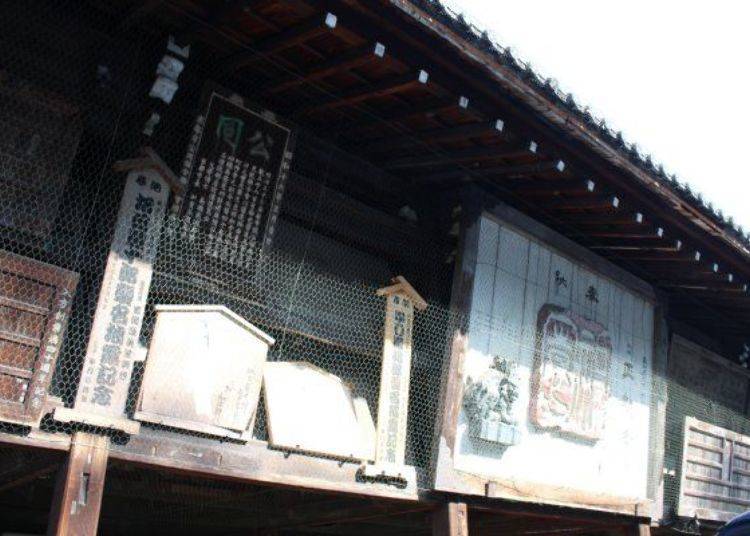
Going north from the east of the Main Shrine, I head to Nishi-Romon gate, and return to Ebisu-sha, where we passed in the beginning.
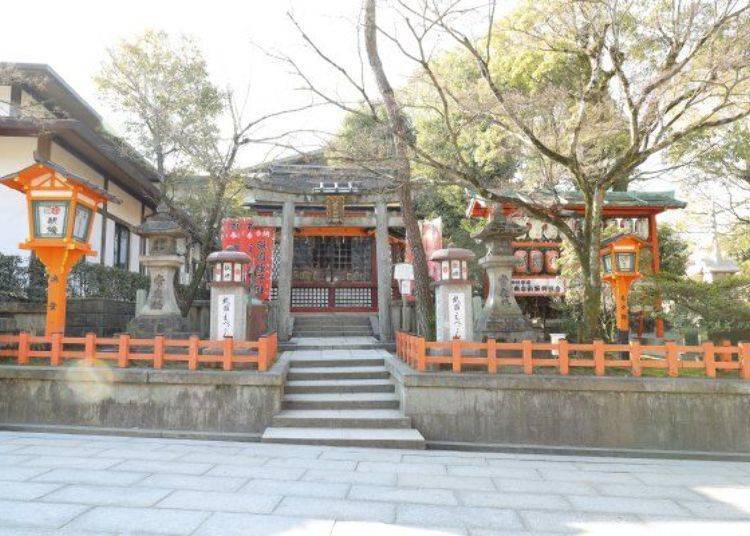
Enshrined here is Kotoshironushi-no-kami, who is also regarded as one of the Seven Lucky Gods, Hiruko-no-kami, a god of the sea and business. This shrine is an Important Cultural Property of Japan.
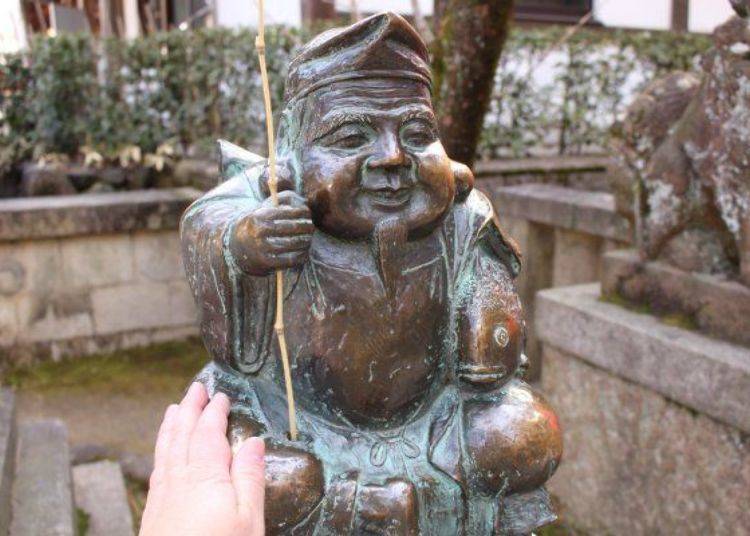
Ookuninushi-sha shrine is directly opposite of Ebisu-sha. Ookuninushi-no-kami was a god of Izumo and commonly called Daikoku. He is also popularly thought of as a god of luck and marriage.
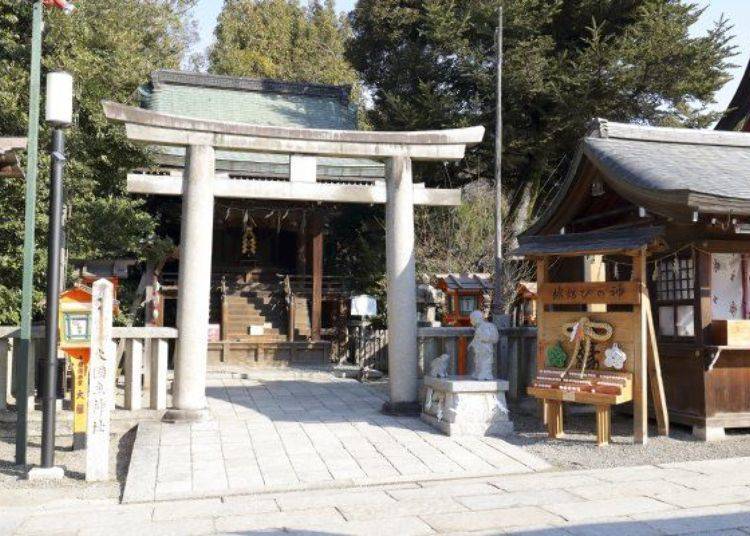
Following the legend of the Hare of Inaba and Okuninushi, there are items representing marriage here in the shape of rabbits. Many pray here for love and a successful marriage!
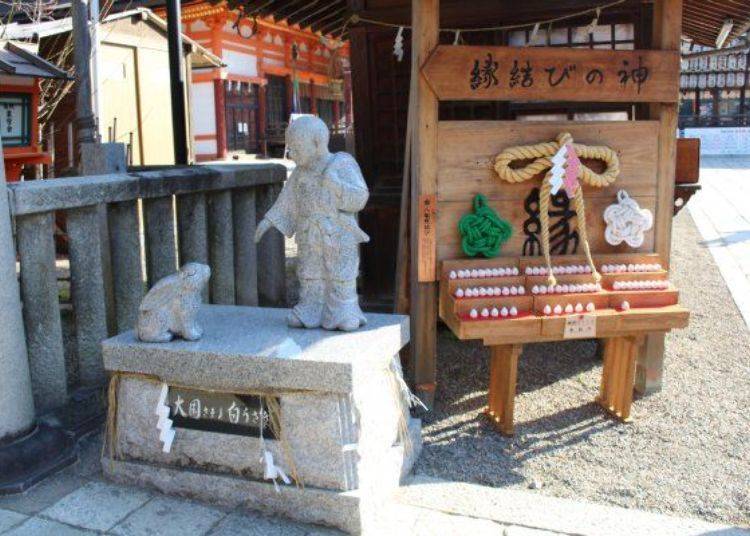
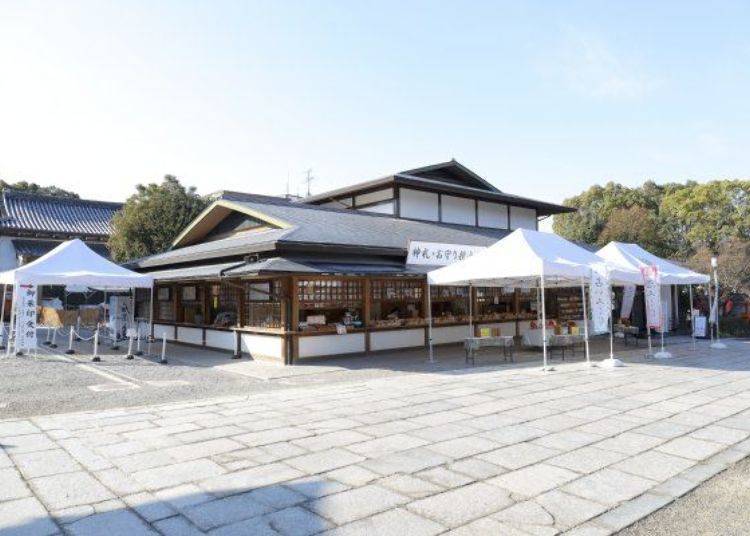
Not only are there lucky talismans and amulets, but there are also items that are great not just for yourself, but as gifts and souvenirs, such as Bigozensha beauty amulets, and oil blot papers for the face.
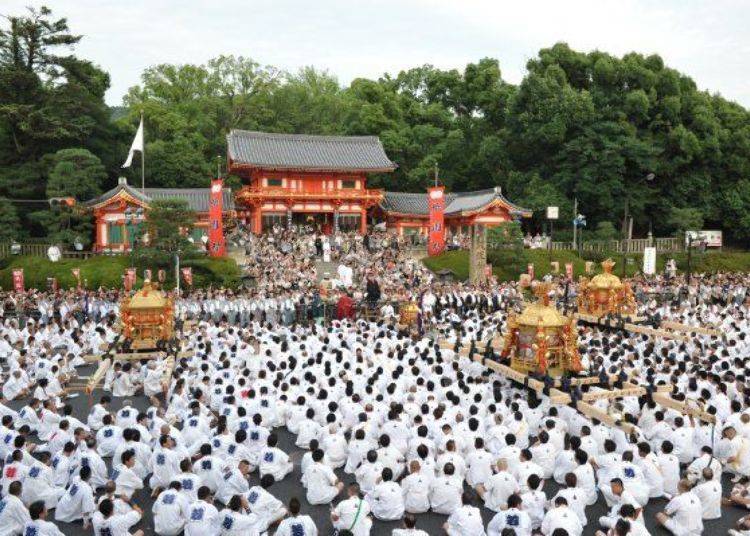
At Yasaka Shrine, the Gion-sai Festival is particularly famous, and one of the three biggest festivals in Japan, held in the month of July.
In addition to the dazzling, decorative floats, the Shinkosai Festival held on the evening of the 17th, where the mikoshi shrines are gathered in front of the Nishi-Romon gate, is one of the highlights.
Also, on the final day of the festival, the Nagoshisai Festival is held, in which you pass through a ring of reeds attached to the torii to ward off bad luck.

-

-
Address
625, Gionmachikitagawa, Higashiyama-ku, Kyoto-shi, Kyoto, 605-0073
View Map -
Nearest Station
Gionshijo Station (Keihan Line)
5 minutes on foot
- Phone Number 075-561-6155
-
Address
625, Gionmachikitagawa, Higashiyama-ku, Kyoto-shi, Kyoto, 605-0073
Surrounded by Greenery at Maruyama Park: Rest at a Scenic Spot
After walking around all the shrines, I went to Maruyama Park next to Yasaka Shrine. Formed over 130 years ago in 1886 (Meiji 19), the entire park is protected as an Important Cultural Property.
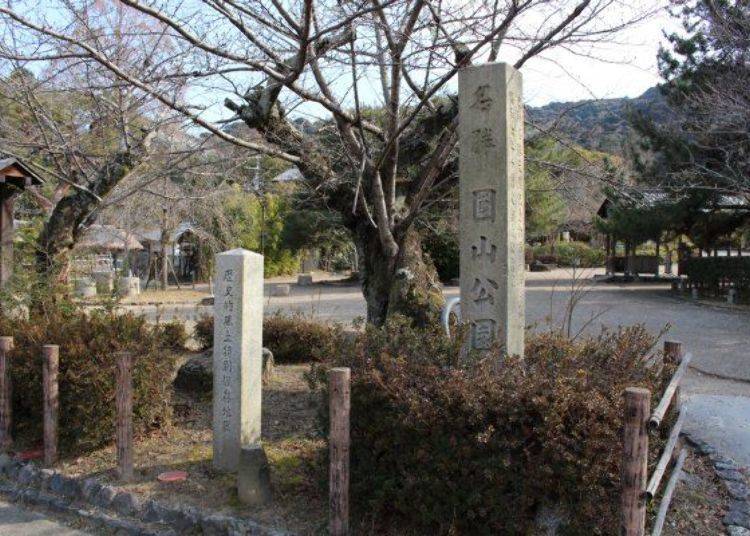
The area where the park now stands has been known as a scenic spot since the Heian Period, however after entering the Meiji Period, much of the area where the shrines were built was taken as public land, and the development of the park began.
Once opened, hundreds of cherry blossoms were planted, and Japanese garden landscaping was done by garden architect Ogawa Jihei VII (Ueji).
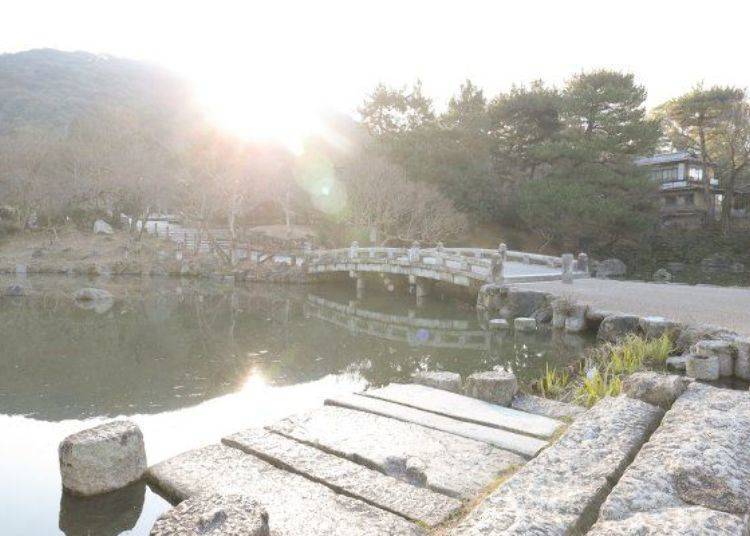
When you cross the stone bridge over the gourd pond, on the mountainside you can see the garden landscape woven of water and stone spreading out, with waterfalls and fountains also in the arrangement.
This was maintained by the Imperial Government and Goichi Takeda, an architect of the Meiji and Taisho Period who was referred to as the father of Kansai architecture. The park is especially crowded in the spring, as it is one of the best cherry-blossom viewing spots in Kyoto. It is especially famous for the 'Gion Drooping Cherry Blossom.'
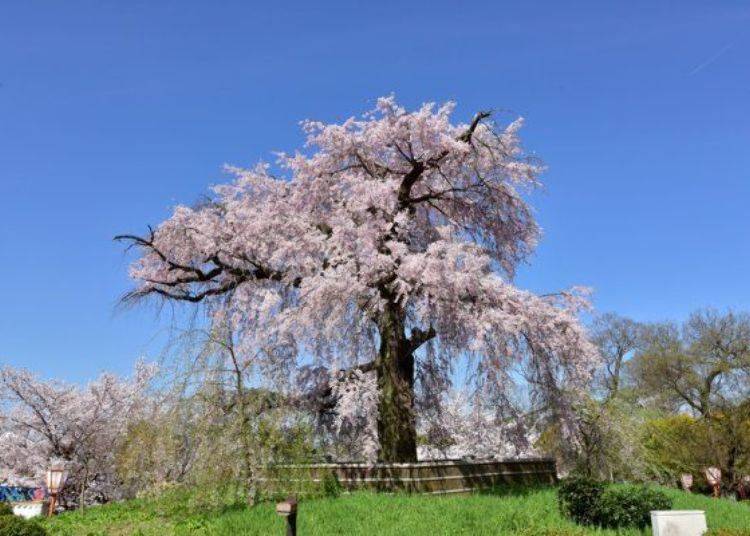
The cherry blossom trees that are there today are second generation, and giant, outstanding trees at 12 meters high, 2.8 meters around the trunk, with branches up to 10 meters. It is said the first tree planted here is about 220 years old, in this park which has been beloved by people since long ago.
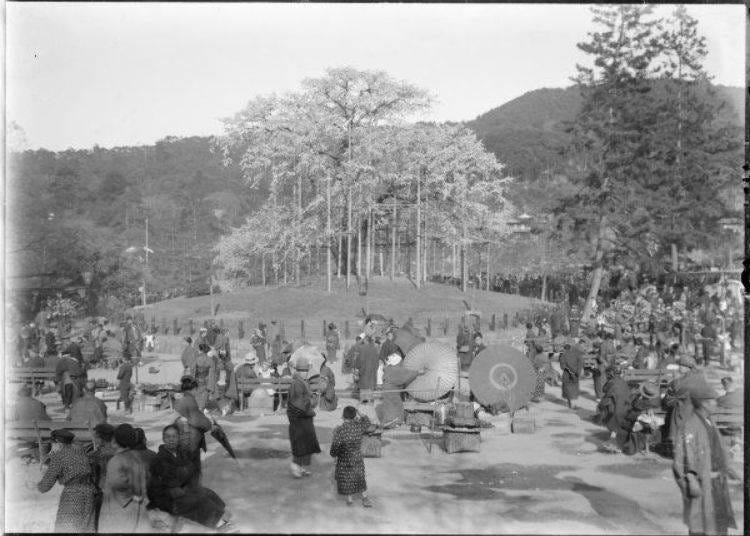
A pedestrian road stretches around the garden and the gourd pond, and is visited by many people, from early morning until evening.
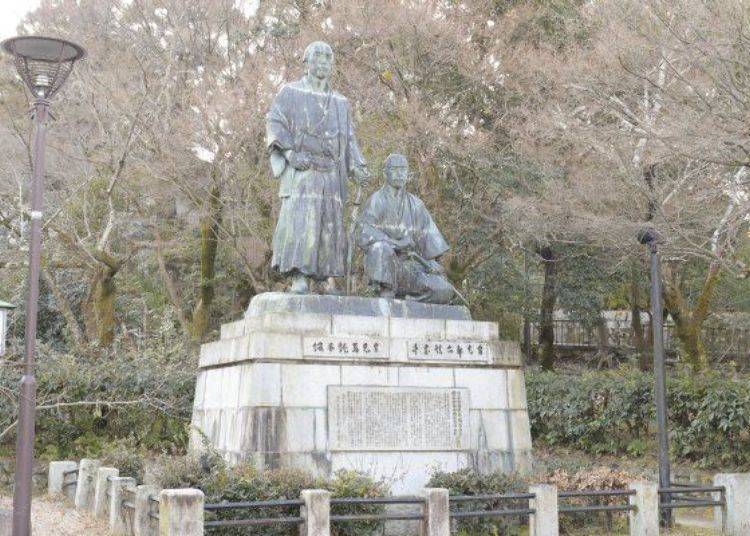
If you continue along the east side of the park to Higashiyama, there is an observatory only about 5 minutes away on foot from which you can get a view of Kyoto looking through the trees.
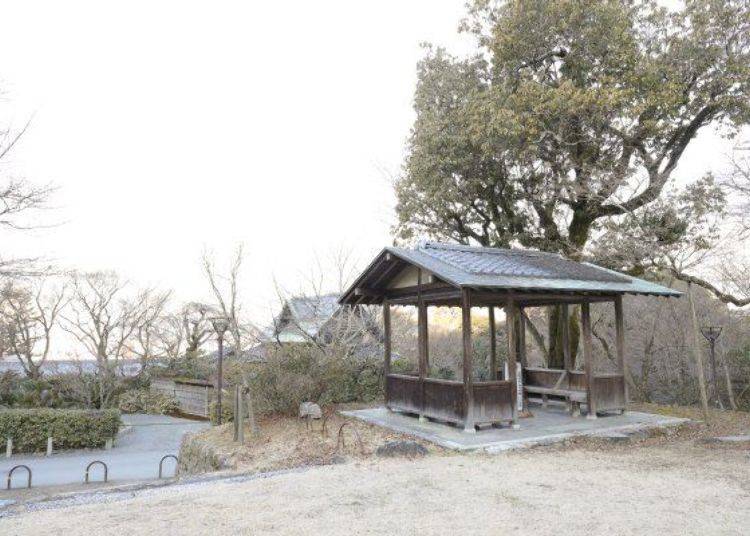
Also in the park is the Maruyama Music Hall, said to be a sacred place of Kyoto folk songs and where various events are still held today, and the west side of the park which is maintained as a public forest. It is a great place to relax and enjoy a moment in the green of nature.
-

-
Address
473, Maruyamacho, Higashiyama-ku, Kyoto-shi, Kyoto others, 605-0071
View Map -
Nearest Station
Gionshijo Station (Keihan Line)
13 minutes on foot
- Phone Number 075-561-1350
-
Address
473, Maruyamacho, Higashiyama-ku, Kyoto-shi, Kyoto others, 605-0071
Yasaka Shrine, which has long been respected by the people of Kyoto, is a treasure trove of wonderful and interesting power spots. And Maruyama Park is a place where the rich nature protected by faith remains present while the downtown area waits nearby.
The foot of Higashiyama is indeed the perfect place to experience the depth of the history of Kyoto.
- Area
- Category
*Prices and options mentioned are subject to change.
*Unless stated otherwise, all prices include tax.
Popular Tours & Activitiess
Recommended places for you
-

Kanzenkoshitsuyakinikutabehodai Gyugyu Paradise Sannomiya
Yakiniku
Kobe, Sannomiya, Kitano
-
Goods

Yoshida Gennojo-Roho Kyoto Buddhist Altars
Gift Shops
Nijo Castle, Kyoto Imperial Palace
-

Jukuseiniku-to Namamottsuarera Nikubaru Italian Nikutaria Sannomiya
Izakaya
Kobe, Sannomiya, Kitano
-
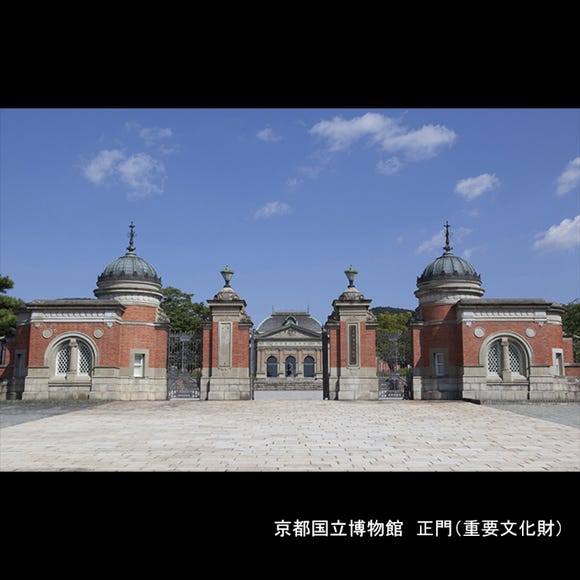
Kyoto National Museum
History Museums
Kyoto Station, To-ji Temple
-

ISHIDAYA Hanare
Yakiniku
Kobe, Sannomiya, Kitano
-

Kambei Sannomiyahonten
Yakiniku
Kobe, Sannomiya, Kitano
-

Celebrate a Dreamy Barbapapa Christmas at JR Osaka Station's Twilight
by: Guest Contributor
-

A First Look at NEMU RESORT’s 2026 Grand Renewal in Ise-Shima: A Resort Shaped by Village, Sea, and Forest
by: Guest Contributor
-
Ad

Café Bahnhof in Osaka: The home-roasted coffee that captivated G20 leaders!
-
Ad

Discover Timeless Beauty: Kimono-en, a Web Magazine Exploring the Spirit of Kimono
-

Kyoto's Hidden Treasures Open This Winter! Enjoy Exclusive Access to 15 Rare Cultural Sites (Jan-Mar 2026)
by: Guest Contributor
-

November Events in Kansai: Fun Festivals, Food, and Things to Do in Kyoto & Osaka
Inspiration for Accommodations
-

Spacious Family Hotel in Namba: 20 Comfortable Stays for Family Fun
-

Charming Hotels to Enjoy the Spectacular Views of Arashiyama's Autumn Leaves from Your Room
-

Experience Stunning Views of Osaka Castle from Private Spaces: Top Hotels Near Osaka Castle
-

Recommended by Visitors! Arashiyama's Best-Rated Hotels
-

Family-Friendly Universal Studios Japan Hotel with Excellent Access
-

Enjoy a Comfortable Stay in Osaka! 10 Hotels with Convenient Airport Shuttle Services
-

Top 10 Recommended Hotels Near Namba Station with Great Access
-

Enjoy Night Views from Your Room! Recommended Hotels in Namba Area
-

Osaka Koreatown: In Search of the Best Eats in the Korean Roots of Osaka's Tsuruhashi Market
-

Top 5 Shinto Shrines and Power spots in Kansai for Love and Marriage
-

6 Surprisingly Cheap Things in Japan
-

Kiyomizu-dera Temple: Guide to Visiting Kyoto's Most Famous Sightseeing Spot
-

3 Best Izakaya In Osaka Where You Can Enjoy Drinks and Local Dishes, Recommended by Locals
-

5 Must-Visit Nara Temples and Shrines: Discover the Timeless Beauty of Japan's Ancient Capital
by: WESTPLAN
- #best gourmet Osaka
- #things to do Osaka
- #what to do in kyoto
- #what to bring to japan
- #best gourmet Kyoto
- #new years in Osaka
- #what to buy in nanba
- #Visiting Osaka
- #onsen tattoo friendly arima
- #daiso
- #Visiting Kyoto
- #best japanese soft drinks
- #japanese fashion culture
- #japanese convenience store snacks
- #japanese nail trends













